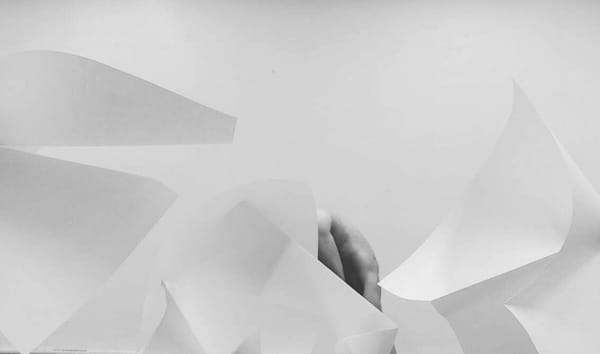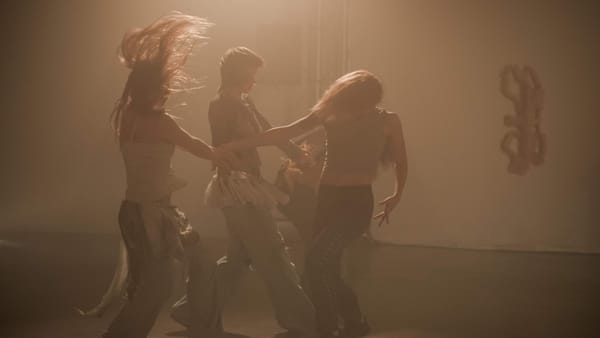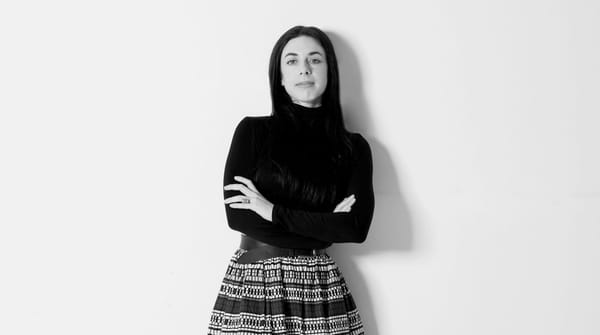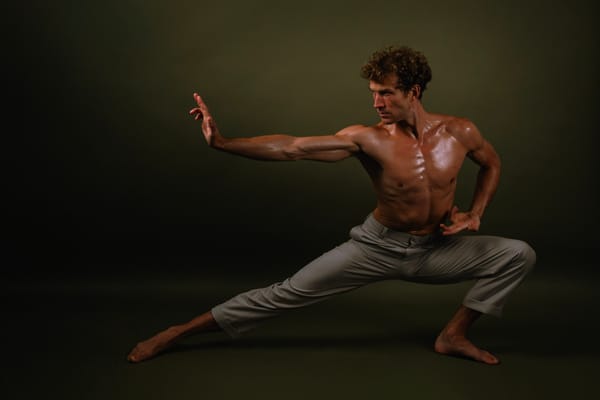Kartellet: The Norwegian Cartel Redefining Male Intimacy Through Dance
In a world where men rarely dance together—let alone hug—a Norwegian troupe is turning masculinity inside out. Meet The Cartel: where folk dance becomes wrestling, audiences become collaborators, and trust is the most daring move of all.
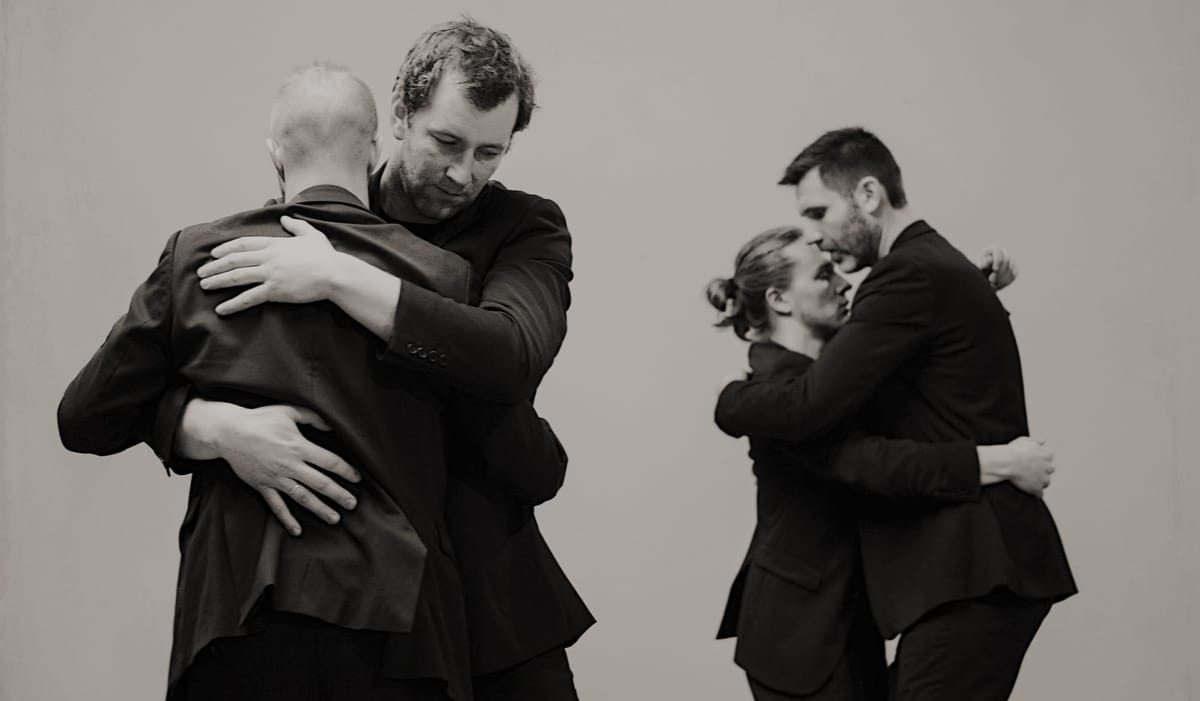
by Jana Al Obeidyine
On a breezy September evening in 2019, I stood outside a small theater in Trieste, Italy, waiting for friends who had just finished a dance performance. There, I struck up a conversation with Lorenzo, a musician who also practiced dance and martial arts. He mentioned an upcoming men’s camp that autumn, which immediately piqued my curiosity.
“What do modern urban men do at a campsite by themselves?” I asked.
“We do ordinary things in nature—and we talk,” he replied.
If his first answer intrigued me, his next one left me completely baffled: “Sharing the emotions and experiences that weigh on your body and soul with other men is therapeutic, you know?”
Honestly, it was the first time I’d ever imagined men gathering around a campfire to open up about their feelings. Unconsciously, I’d expected something more stereotypical—hunting, fighting, or planning some venture. The idea of men embracing vulnerability and offering mutual support wasn’t an image that came naturally to me. In fact, I’d never witnessed such asexual intimacy among men outside fiction—and even there, it’s usually framed as strong friendship rather than a collective ritual.
This is partly why Kartellet (The Cartel), a Norwegian all-male dance group, caught my attention. Norway is often celebrated as a leader in gender equality, making the existence of an exclusively male dance troupe seem paradoxical—yet fascinating.
The Birth of The Cartel
Sigurd Johan Heide, the group’s founder, is described by those who know him as easygoing, charismatic, and deeply empathetic—a talented choreographer and educator. I met him virtually on April 4, 2020, during the strictest phase of the global pandemic lockdown. While spring had arrived in Beirut, leaving the air cleaner than it had been in decades, Tromsø—the Arctic coastal county where Sigurd lived—was still buried under snow. “Two meters remain out of the six and a half we had this winter,” he told me.
“Why an all-male dance group?” I asked.
Sigurd explained that the idea began with an interactive, all-female performance he’d been commissioned to create. “It made me wonder—what if the dancers were men in suits instead of women in beautiful dresses? How would people react to a predominantly male presence?”
At the same time, Norwegian media had been debating the idea that “when men gather, power emerges.” Sigurd wanted to test that theory. “What kind of power arises in male-only spaces?”
He also drew inspiration from Norway’s fishing traditions. In Lofoten, just south of Tromsø, fishermen once lived together for months in cramped cabins. When storms kept them ashore, they passed the time playing cards, making music, and even dancing together. “I wanted to explore the dynamics of such gatherings in a modern context.”
Originally, The Cartel’s debut performance was meant to be a one-off festival act. But the response was overwhelming—critics and audiences loved it, and soon, festivals across Norway were requesting the show. They ended up performing it 80 times. “That’s when I decided to formalize the experiment and name the group Kartellet,” Sigurd said.

An Immersive Experience
The Cartel’s performances are intimate—only 30 audience members are admitted, and participation is mandatory. “The atmosphere is special from the moment you arrive,” says Tone Erlien, a dance curator who has attended multiple shows. “The dancers welcome each person individually, establishing an immediate connection. Inside, chairs are scattered throughout the space, blurring the line between performers and audience.”
“Does everyone embrace the interactivity?” I asked.
Sigurd laughed. “Oh no. Sometimes people leave as soon as they realize what’s expected! Once, a man told us he couldn’t stand being touched by strangers. So we seated him in a chair and danced around him, using eye contact as a form of connection instead.”
To ensure full immersion, phones and cameras are banned. “A camera’s presence makes people self-conscious,” Sigurd explained. “We want raw, unfiltered engagement.” Promotional photos are staged separately.
Play, Intensity, and Trust
The Cartel’s choreography is rooted in Norwegian folk dance—not in specific steps, but in its playful spirit. “Traditional Norwegian dance is deeply connected to games,” Sigurd said. Rather than rigid sequences, the group designs frameworks and rules that allow spontaneous interaction with the audience. “We need to build trust but also enforce structure—otherwise, the collaboration falls apart.”
One such game involves tossing a tennis ball in rhythm. “It’s simple, fun, and anyone can join,” Sigurd recalled with a smile. “Once, we had an audience group who were incredible at it. Turns out, they were an Indian cricket team!”
No two performances are alike. The Cartel thrives on unpredictability, weaving bodily and relational intensity into each show. “Think of Olympic sprinters before a race—that razor-sharp focus,” Sigurd said. “Or the tension in sports when play suddenly turns serious. That’s the energy we channel.”
Even their “hugs” are performances—a blend of wrestling and waltzing, oscillating between roughness and tenderness.

Who Joins The Cartel?
The group consists of five dancers and two musicians (live music is integral to Norwegian dance). Only two members are professional dancers; the rest have day jobs—often physical labor, which lends them a rugged strength. “Once, during a wrestling sequence, a dancer got so into it he broke my rib,” Sigurd admitted.
Dancers must possess two key traits: spatial awareness and empathy. “We move closely with the audience. You need to navigate without harm—and sense when someone’s uncomfortable.”
Why Does It Matter?
To understand The Cartel’s cultural significance, I spoke with Egil Bakka, a Norwegian dance scholar. “Men benefit from trustful, playful gatherings where physical closeness is allowed,” he said. “If we accept that gender influences social and emotional dynamics, then exploring shared identity is valuable. Sigurd’s work mirrors sports—where men find camaraderie, play, and touch.”
In essence, The Cartel is reimagining masculinity in a gender-equal world—one dance at a time.
Website: https://kartellet.org/about-kartellet/
This story was originally published in A Dance Mag issue 03: Touch.


